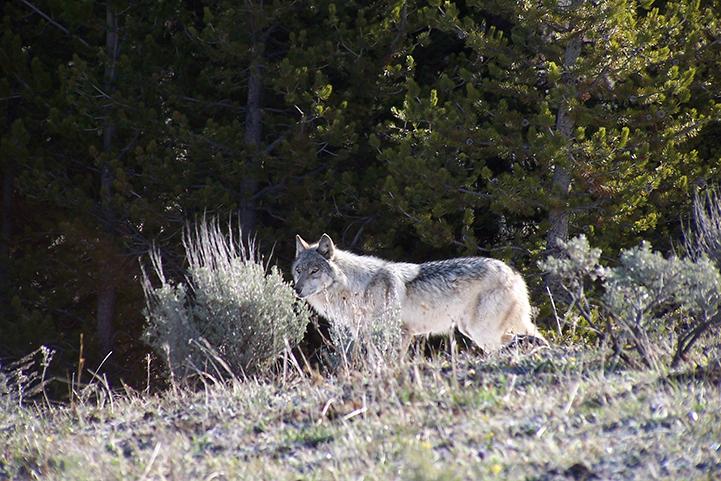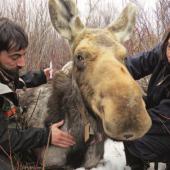Extreme Makeover: Wolf Edition
On March 28, 2008 with the delisting of the Rocky Mountain Gray Wolf, the federal Endangered Species Act (ESA) did exactly what it was designed to do—recover a listed species to a point where the protections afforded under the ESA are no longer necessary. Montana wildlife officials welcomed the removal of the state’s gray wolf population from the federal list. Wolf conservation and management in Montana is now officially the responsibility of the state. So what does that mean?
Wolves are now classified in Montana as a species in need of management, and the wolf will now be managed much like Montana’s other wildlife species. With delisting comes the flexibility for landowners to protect livestock and domestic dogs. As is the case with lions and black bears, landowners may kill a wolf seen actively biting, wounding, chasing, harassing, or attacking livestock or pets. Such incidents must be reported to FWP in 72 hours. The only other ways that wolves can be killed legally in Montana are during an official hunting or trapping season or to protect human life. The new flexibility, however, may be short-lived because of legal challenges by groups to block wolf delisting.
The Montana Fish, Wildlife & Parks Commission adopted a wolf-hunting season for 2008. Wolf hunting in the state would be closely managed by harvest quotas, which must be approved by the commission. However, in light of legal challenges, wolf-hunting licenses will not be sold until Montana is assured a season can and will occur.
Nevertheless, the recovery of the wolf in the northern Rockies is one of the fastest endangered-species comebacks on record. The minimum recovery goal for wolves in the northern Rocky Mountains was set at a minimum of 30 breeding pairs—successfully reproducing wolf packs—and a minimum of 300 individual wolves for at least three consecutive years. This goal was achieved in 2002, and the wolf population has increased every year since. The wolf population in the Northern Rocky Mountain Recovery Area, which includes parts of Montana, Idaho, and Wyoming, now stands at about 1,500, with 100 breeding pairs. In the mid 1990s, to hasten the overall pace of wolf recovery in the Northern Rockies, 66 wolves were released into Yellowstone National Park and central Idaho. About 420 wolves now inhabit Montana in 73 packs and 39 breeding pairs. Montana’s wolf conservation and management is expected to cost about $1 million a year. To fund this, Montana will continue efforts to secure federal funding and combine it with revenue from the sale of wolf-hunting licenses, private sources, and other in-kind contributions.
To learn more about Montana’s recovered wolf population and its conservation and management, visit FWP online at fwp.mt.gov/wildthings/wolf where you can also tell FWP if you see wolves or wolf sign. The information helps to verify the activity, distribution, and pack size of Montana’s recovered wolf population.













